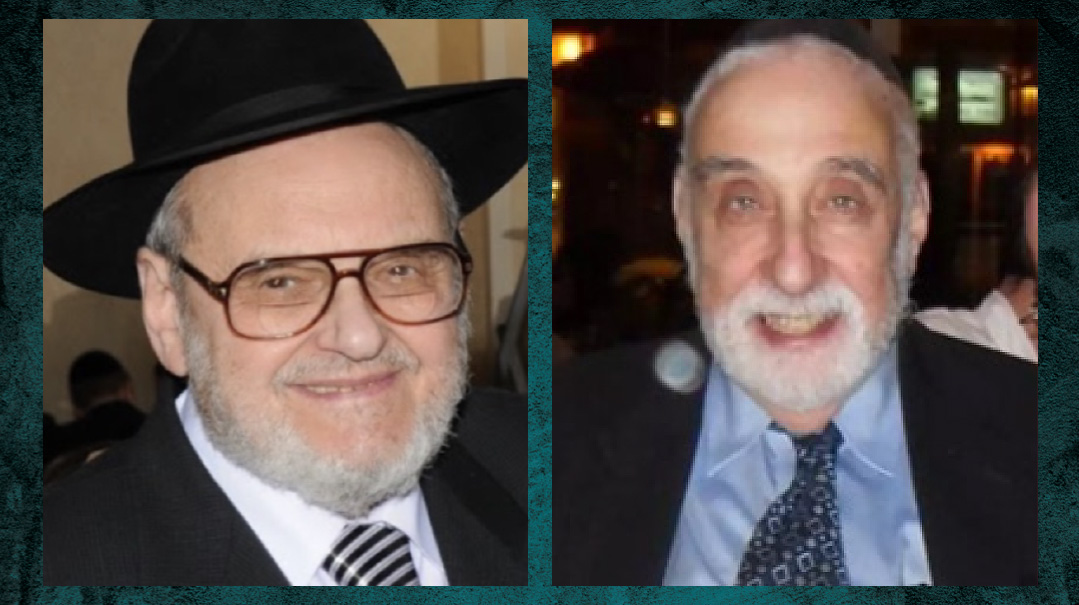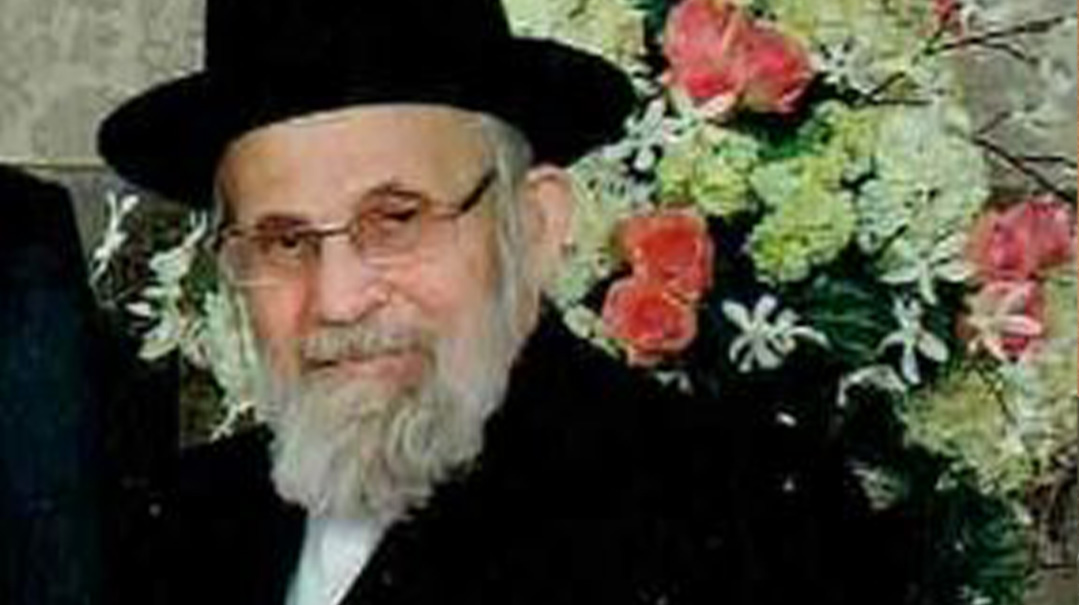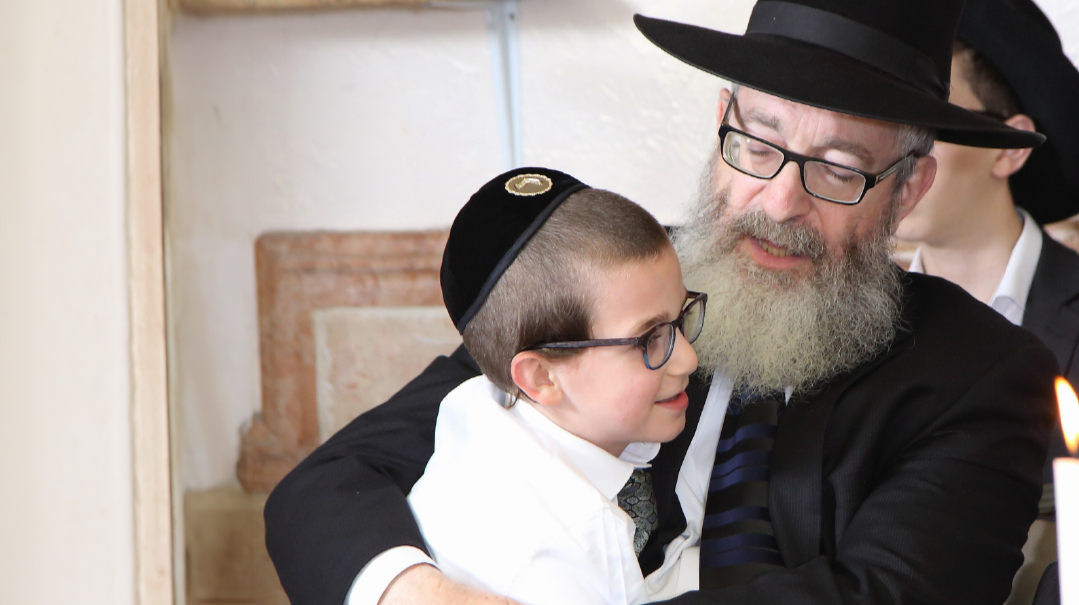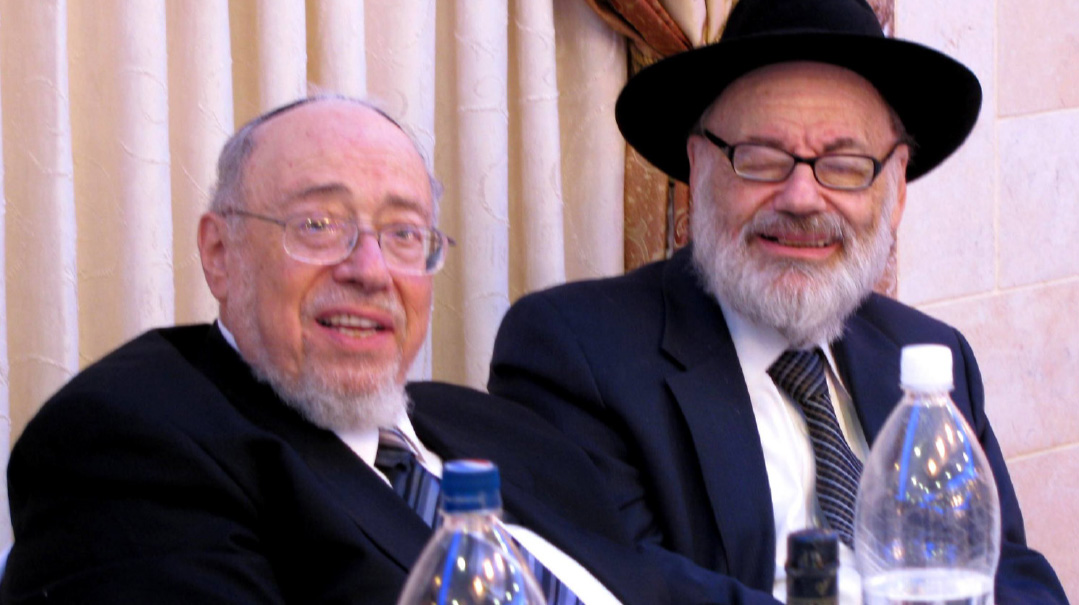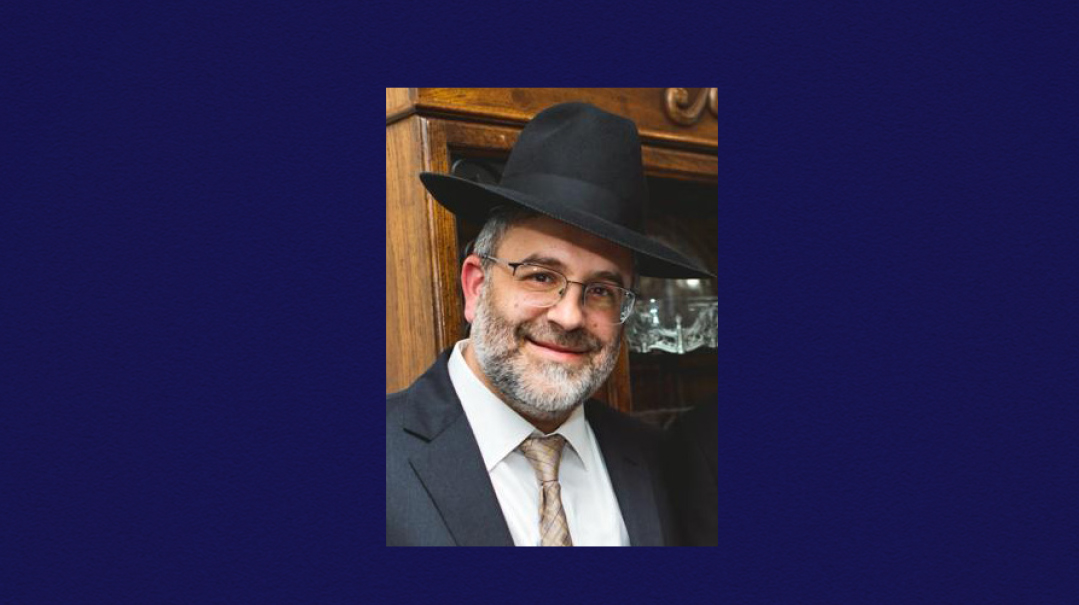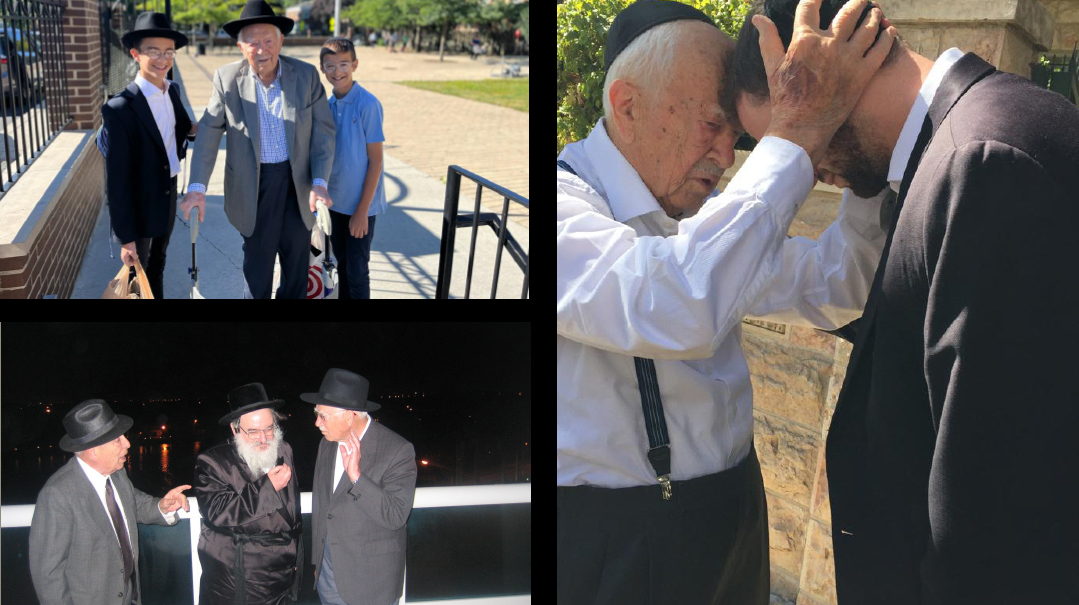Mesoras Rav Moshe

Rav Michel Shurkin Shares An Insider’s View
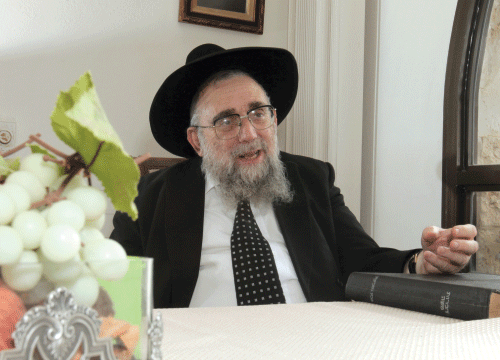
R
av Michel Shurkin is not a man who has time for interviews. A consummate masmid who, talmidim relate, will not miss night seder in Yeshivas Toras Moshe in Yerushalayim for his own children’s sheva brachos, he seemed an unlikely candidate to spend time discussing his Rebbi, Rav Moshe Feinstein, ztz”l. Why would the rebbi who is so devoted to his talmidim that he once flew in to America for a simchah and returned to yeshivah directly from the airport so that he wouldn’t miss more than one day of shiur spare an hour for us?
As if reading my mind, Rav Michel answers that question as soon as I arrive at his Har Nof apartment. “I’m not worthy of eulogizing Rav Moshe, or of giving you a biography of him. But I have mesorahs [traditions] from Rav Moshe that I feel obligated to relay to the public.
“This is a mesorah session,” he concludes, spelling out the ground rules. “It’s not an interview or a hesped.”
In those words, Rav Michel has encapsulated the purpose of his monumental work, Megged Givos Olam, in which he chronicles his memories of several gedolei Yisrael with whom he was fortunate to share a relationship. While full of stories, the sefer is a work in mesorah, in which a reader feels each gadol’s persona and views — both in halachah and hashkafah — come to life through the lens of a devoted talmid. In our time together, Rav Michel shares the mesorah he gleaned from over a quarter of a century in Rav Moshe’s shadow.
Much More than a Rebbi
Listening to Rav Michel talk about his rebbi, one senses both awe and love resonating from his voice. He shares a story that offers us a glimpse into the source of the awe. “I recently read that Rav Aharon Leib Steinman, shlita, was decrying the terrible yeridas hadoros [deterioration of the generations]. He pointed to the fact that just one generation ago, we had Rav Moshe and Rav Aharon Kotler, and now we don’t have anyone of their stature.
“My father (Rav Yaakov Moshe Shurkin) strongly held differently. He told me that Rav Moshe wasn’t from the previous generation — he was equivalent to gedolim from hundreds of years ago. And my father knew. He was a talmid of the Chofetz Chaim for sixteen years, and he knew all of the gedolim of prewar Europe.
But that awe is mixed with love, which provided the impetus for Rav Michel to take an active role in the kavod acharon of his rebbi.
“When Rav Moshe was niftar, I performed the taharah on him. At first I was scared, but then I remembered that my father performed the taharah on the Chofetz Chaim, so I considered it a maaseh avos siman labanim.”
We caught Rav Michel with a Dibros Moshe on his table, in which, a talmid later reveals, he has the distinctive honor of being mentioned by name several times. In one place (Yevamos, perek 4, note 84), Rav Moshe wrote, “HaRav HaGaon Rav Michel Shurkin, who learned in the yeshivah in 5723, asked …”
The respect and affection, it seems, went both ways — Rav Moshe appreciated the brilliance of the young man in his yeshivah long before the world had heard of him. And aside from being a talmid, Rav Michel was also a relative. Rav Moshe’s father, Rav Dovid, and Rav Yaakov Kantrowitz married sisters. Rav Michel’s mother was Rav Yaakov Kantrowitz’s daughter, Rav Moshe’s first cousin.
To Rav Moshe, family was very important. The day before Rav Michel’s first son’s bris, he visited Rav Moshe, who was very old and weak. Rav Michel assumed that he would be unable to attend the bris, so he came to get a brachah beforehand. While he was there, he heard the family celebrating. They explained that a Vaad HaRabonim meeting had been canceled, freeing Rav Moshe from having to attend in his weakened state. Rav Michel then asked for a brachah, and left.
“That night,” he recounts, “between my fifteenth and sixteenth phone calls to inform people about the bris, the phone rang. Rav Moshe was on the line. ‘Michel, where’s the bris?’ he asked.”
Rav Moshe didn’t have the energy for a Vaad HaRabonim meeting, but family was family and he wouldn’t miss the bris.
“In a picture from our second son’s bris that we cherish until today, you can see his overwhelming love towards the little baby on his lap.” [Rav Moshe was sandak for both.]
But the relationship went far beyond the blood bond. When Rav Michel’s father passed away, “Rav Moshe took over my life. I didn’t budge without him. In fact, Rav Moshe wrote a letter stating, ‘Kol maasav hu oseh al pi — all of his actions are based on my words.’”
A Rebbi in all Areas
As appropriate for someone who clung to his rebbi so fastidiously, the first mesorah Rav Michel chooses to share is about the rebbi-talmid relationship.
“Rav Moshe held that a person must have a rebbi — in all areas. A rebbi in psak (halachah), in lomdus, and in hashkafah. His own rebbi was Rav Pesach Pruskin, also known as Rav Pesach miKobrin. To give you an idea of the greatness of Rav Pesach miKobrin, when Rav Chaim Soloveitchik passed away, the Brisker Rav asked Rav Pesach to be maspid.
“In terms of psak,” continues Rav Michel, “Rav Moshe’s rebbi was his father, Rav Dovid Feinstein, and his uncle, Rav Elya Pruzhiner, one of Europe’s gedolei hador.
True to his shittah regarding the need for a rebbi, when someone would come to ask Rav Moshe a question, he would say, “Did you ask the rav of your shul?” If it was a yeshivah bochur, he would say, “Did you ask your rosh yeshivah?”
He wanted people to ask their own rabbanim. And if someone repeated a psak from his rav that seemed wrong, Rav Moshe would say, “You misunderstood. Go ask again.” He would never say that another respected rav was wrong or undermine the authority of a person’s own rebbi or rosh yeshivah.
Ruling According to Minhag
Nowadays, notes Rav Michel, people feel a need to know what all the contemporary sifrei halachah write about a subject, and they rule based on those seforim. Not Rav Moshe.
“Rav Moshe knew everything, and he would pasken from Rishonim, but mostly according to the common practice in Klal Yisrael. He rarely divulged the sources for a ruling, stating simply, ‘m’firt zich azoi — the custom is to do as follows.’ He knew safrus inside and out, for instance, but when I would come to him with a safrus question, if he had a doubt, he would send me to an old sofer, whose father had been a sofer, to ask him what the mesorah was.
“In one of the tshuvos, Rav Moshe hints that he knew Kabbalah. He had ruled that one could do milah and priah with one cut. Someone wrote to him that it might be fine according to halachah, but according to the Zohar, it wasn’t. Rav Moshe wrote back, ‘Gam sodos haTorah yeduos l’chachmei hador — the secret portions of the Torah are also known to the wise men of the generation.’
“Nevertheless, the mesorah was docheh hakol — it cast away all other lines of reasoning. He loved Aruch HaShulchan, because it brings down a lot of the old minhagim.”
Rav Shurkin recalls instances in which he pointed out that the Shulchan Aruch ruled differently from the customary practice, but Rav Moshe, with his great brilliance, would explain how to understand the Shulchan Aruch in a way that conformed to tradition. Minhag Yisrael overruled everything.
“There are small mezuzos,” he offers as an example, “in which the leg on the left side of the hey is just a dot. Someone once showed me a mezuzah like that and I said, ‘Vadai passul — this is definitely invalid.’ The Shulchan Aruch writes clearly that the left leg must be the size of a small yud. Don’t even bother showing it to Rav Moshe.”
The fellow showed it to Rav Moshe anyway. “Veit fun passul,” he responded. “Far from passul.”
When Rav Michel asked how it could be kosher, considering the Shulchan Aruch, Rav Moshe explained that the minimal shiur required by the Shulchan Aruch is the size of the top of the yud, without the small “leg” coming down from it.
“I have seen articles promoting oversight on the production of STaM (Sifrei Torah, tefillin, and mezuzos),” concludes Rav Michel, “and the prime example they use as proof of the need for oversight is that dot under the hey. But these mezuzos were in use all over Europe, and Rav Moshe insisted that they were veit fun passul to validate the mesorah.”
The mesorahs that Rav Moshe clung to didn’t have to be 1,000 years old, either.
“There was a young talmid chacham who published a big work against the use of electric shavers, under a pseudonym. When Rav Moshe heard about it, he was uncharacteristically upset, because all the rabbanim in America had allowed the use of electric shavers. Rav Moshe was upset that a young person would challenge that mesorah without receiving authorization from other gedolim. This young man once came to discuss it with Rav Moshe, but Rav Moshe wasn’t feeling well. After the fellow left, Rav Moshe asked who they had turned away.
“When he heard that it was the one who wrote against electric shavers, he was upset that they didn’t let him in.”
The story doesn’t end there. Rav Dovid Feinstein, who is not wont to talk this way, came over to Rav Michel and asked him, “Do you know this fellow?” When Rav Michel said he did, Rav Dovid said, “I never saw my father so upset about anything. Tell this man that if he values his life, he should calm down.”
“I relayed the message to the young man,” recalls Rav Michel, “that he had better keep quiet on this topic. And he listened.
“You want to hear a rebbishe moifes regarding Rav Moshe?” adds Rav Michel, with a twinkle in his eye. “The fellow had been childless for eight years. From the time that he began to quiet down regarding the shavers, the children started coming, one after another.”
I ask whether Rav Moshe was supportive of the trend towards being machmir, even if there was a mesorah otherwise. Rav Michel answers with a story, of course.
“During the 1970s, Kissinger sold a lot of wheat the US had stockpiled to Russia. The reason people aren’t so careful about eating chadash is based on a sfek-sfeikah [double doubt] recorded by the Rema, which relies on uncertainty that the grain is chadash. HaGaon HaRav Meiselman (Rosh Yeshivah of Toras Moshe) came to Rav Moshe with statistics proving that the grain in the US after they gave away the stockpiles was certainly chadash. Rav Moshe was not impressed. ‘In Lithuania we ate grain that was certainly chadash,’ he said. After about an hour of discussion, Rav Moshe finally said, ‘Efsher iz es a sheineh minhag — maybe it’s a nice custom.’ But that’s as far as he would go because, whether stringent or lenient, mesorah was mesorah.”
In a similar vein, Rav Moshe was certain that a community in Klal Yisrael couldn’t be guilty of doing something wrong en masse. “I recently heard that a gadol ruled a certain way,” says Rav Michel, “and someone asked, ‘But doesn’t everyone do the opposite?’ The gadol replied, ‘There’s plenty of room in Gehinnom.’
“Rav Moshe held there was no way that the entire public would go to Gehinnom. There must be a reason why what they were doing was permissible, and he would find that reason. He held that just as you have to have emunah in Hashem, you have to have emunah in Klal Yisrael.”
Knowing the Facts
Another factor at work in every psak from Rav Moshe was his insistence on knowing all of the facts before ruling on a matter. He would quote from the Gra, who derived from two teachings of Chazal that it’s not enough for a rav to know the halachos in Shulchan Aruch clearly; he must also know the pertinent facts.
“If Rav Moshe felt that he didn’t know the facts, he didn’t rule,” recalls Rav Michel. “He once remarked that he’s more familiar with the insides of a cow than with the inside of his apartment. And that was a small apartment!
“A sofer once told me,” he adds, “that he couldn’t believe how much Rav Moshe knew about safrus. And if Rav Moshe was sandak at a bris, he didn’t cast his gaze heavenward. He would look down the entire time, and he would point out to the mohel, ‘You should cut some more over here…’”
Some want to believe that there were people who could mislead Rav Moshe on the facts. No one could mislead him, Rav Michel assures us. “He knew exactly who he was dealing with.”
And Rav Moshe’s astute sense of observation wasn’t limited to halachic areas. One day, as Rav Moshe walked into his house, he noticed the Algemeiner Journal sitting on the table, open to a full page of nichum aveilim ads for a relatively small-time chassidic rebbe who was niftar. He murmured, “Nu, der mechutan.”
Rav Michel felt he had to find out what thought was behind that comment. Family members figured it out. Rav Moshe had wondered for a moment why people would spend so much money on ads for this rebbe, and in a split second realized that the rebbe’s mechutan was a wealthy person who supported many institutions, and they were trying to curry favor with their benefactor by placing those ads.
“With all his gutskeit (kindness), you couldn’t put anything over him,” concludes Rav Michel.
Not a Meikel
A common impression upon learning some tshuvos of Rav Moshe is that he was a meikel, someone who tended towards leniencies.
“It’s simply not true,” states Rav Michel flatly. “When it came to certain fertility-related issues, he was extremely stringent. Ethiopians, he ruled, were gentiles. And he would rule from hashkafah sometimes, prohibiting the use of certain devices on Shabbos because using them wouldn’t be in the spirit of Shabbos.”
Even when Rav Moshe held that something was permissible, there were times he didn’t want to issue that ruling to someone he felt might not stick to the spirit of Shabbos if he gave a heter.
“A woman who only spoke English once phoned while I was there. Rav Moshe didn’t speak English, so I acted as the translator. She wanted to know whether a certain action was permissible on Yom Tov. I knew Rav Moshe held it was mutar, but he told me, ‘Zug ihr zi zul tun vus zi hut getuhn letzter yahr — tell her she should do what she did last year.’ This way, he didn’t tell her it was assur, which would have gone against his own ruling on the matter, but he didn’t issue a heter that might be taken the wrong way.”
Rav Michel had the unique distinction of attending Rav Yoshe Ber Soloveitchik’s shiur for twenty-five out of the twenty-seven years he attended Rav Moshe’s shiur. “I would tell each one what the other said, but I was afraid to say it in their names, so I just said it in my own name. They each thought I must be the gadol hador.”
The two had the utmost respect for each other, says Rav Michel. They were relatives — Rav Elya Pruzhiner, Rav Moshe’s uncle, was Rav Yoshe Ber’s maternal grandfather.
“I remember three things Rav Yoshe Ber told me about Rav Moshe. One was that Rav Moshe was in his ‘tif achtziker [deep eighties],’ but he has so much chein [charm]. The second was that Rav Moshe has an approach to every single sugya in Shas. And the third was an addendum to the second: ‘Not that I agree with him on all of them …’”
Rav Michel chuckles. “Nu, kach hi darka shel Torah, of course they didn’t agree on everything.”
Perhaps surprisingly, they often concurred in psak halachah, though often reaching their conclusions from different directions, such as fertility-related and many other halachic issues.
Even some of Rav Moshe’s rulings that seemed lenient weren’t necessarily so. One famous example is Rav Moshe’s teshuvah permitting the use of a mechitzah that is eighteen tefachim tall. This teshuvah caused great waves, and many kannoim challenged Rav Moshe on it, but Rav Reuven Grozovzky thanked him for it.
“And Rav Reuven was a kannoi in his own right,” comments Rav Michel. “Rav Shach told me that Rav Reuven was arrested in Europe for protesting against chillul Shabbos. In this case, he felt that Rav Moshe had struck the right balance of taking the letter of the law into account, so that shuls wouldn’t end up doing away with mechitzos altogether.”
“Tzaddik Yesod Olam”
There is a famous saying that the gaonus (Torah brilliance) of Rav Chaim Brisker overshadowed his tzidkus (piety), and with the Chofetz Chaim, it was exactly the opposite — his tzidkus overshadowed his gaonus. With all the talk of Rav Moshe’s genius, Rav Michel reminds us that it’s vital to see the other side of Rav Moshe.
“He was a tzaddik yesod olam.
“His davening was something to behold. You can’t understand what it means to stand before Hashem unless you saw Rav Moshe daven. He had emunah b’chush — he felt Hashem’s presence. He was a ‘Shivisi person.’ He could talk to you, but his mind would be on Hashem.”
And despite his gaonus, everyone recognized his tzidkus. It’s no secret that the Satmarer Rav, ztz”l, disagreed strongly with Rav Moshe on certain halachic issues. But when the Satmarer Rav had a stroke and his life was on the line, the entire top brass of Satmar — Reb Yossel Ashkenazi, Reb Sender Deutsch, and others — came to MTJ and begged him to daven for their Rebbe.
“And I know that he was mispallel,” says Rav Michel resolutely, “because against all odds the Rebbe survived.”
“People misunderstood their relationship. The Satmarer Rav knew how to criticize those with whom he disagreed. But he never issued a critical word about Rav Moshe. Never. And I personally saw Rav Chananya Deutsch, the author of Taharas Yom Tov, come to discuss whether the library of a shul had the kedushah of a shul. We were surprised to see a Satmarer chassid there, but he told us that the Satmarer Rav often sent him to discuss halachic issues. And Rav Moshe and the Satmarer Rav worked together on many issues, such as fighting giyus banos [mandatory conscription of girls] into the Israeli army.”
“VeHa’Ish Moshe Anav Me’od”
Everyone knows that Rav Moshe was humble, some even going as far as to apply the verse, “veha’ish Moshe anav me’od — the man, Moshe, was exceedingly humble” to him. But there are two types of humility, notes Rav Michel. There are great people who draw regular folk near to them, but only from their exalted position on top. That also requires humility. But Rav Moshe didn’t treat others as though he was on top. He was everybody’s best friend, their brother, their buddy.
“My father would say,” relates Rav Michel, “that when Rav Moshe was created, they left out one part. The seforim say that bad middos come from the marah. ‘He had no galle [marah in Yiddish],’ my father said.”
A chazzan who made a record of Lubliner niggunim asked Rav Moshe to give him a haskamah (letter of recommendation) for his record. When Rav Moshe explained that rabbanim don’t give haskamos for records, the man said, “But I have five daughters to marry off!”
“Rav Moshe gave him a haskamah,” says Rav Michel.
He would go out of his way to be available. Once the heating in MTJ broke, and the yeshivah temporarily moved to a nearby shul. Rav Michel was learning in that shul, but he needed a sefer, so he walked back to MTJ to get it. In the beis medrash sat Rav Moshe in his coat, learning. “Not everyone knows where the yeshivah is stationed now,” he explained. “Someone might come with a sheilah and not know where to find me.”
And this from someone who viewed himself as a Rosh Yeshivah, not a posek — when asked what he did for a living, he replied, “I say shiurim.”
For people who had witnessed the glory of Torah in Europe, the American Torah scene might have been a letdown. But Rav Moshe loved American-born Yidden and treated them with great respect. “I remember the ahavah and kavod with which he would address Rav Gershon Wiesenfeld, a native American who was the talmid muvhak of Rav Leib Malin.”
Rav Moshe’s humility was the genuine article — the kind in which a person realizes his value but is humble nonetheless.
“About two years before Rav Moshe passed away, his heart was very weak. But when a concerned caller inquired about his health during Aseres Yemei Teshuvah, he assured the caller that he would be fine during that year. ‘The young generation is a feiner dor, mit feiner rabbanim – a good generation, with fine rabbanim,’ he said, ‘uber mehn darf mich nuch hubben — but they still need me.’
“When he later said, two weeks before he was niftar, that he couldn’t pasken any more, we knew it was all over.”
All of American Jewry felt a “kinship” with him.
“When he was niftar,” recalls Rav Michel, “Rav Ruderman was the oldest rosh yeshivah in the United States, and he was the first maspid. He got up before a crowd of some 50,000 people and said, “Vus ken ich zogen? Rav Moshe iz nisht doh — what can I say? Rav Moshe’s not here.’ To say that the crowd was mourning would be a misnomer. They were stunned. In shock. Each person felt personally bereft of ‘his’ Rav Moshe.”
“Rav Wolbe may have summed it up best: ‘Not only was Rav Moshe the gaon hador and the tzaddik hador, he was also the biggest mentsch in the dor.’”
One would expect a talmid as close as Rav Michel Shurkin was to Rav Moshe to know everything there is to know, but as we walk out the door, he says, “There is still a lot unknown about Rav Moshe. Harbei gadol hanistar yoseir min hagalui — the hidden is much greater than that which is known.”
Are there stories that cause even this close to talmid to be amazed? “I saw his hasmadah, his gaonus, his tzidkus, and his gutskeit. Nothing I hear about his greatness surprises me.”
(Originally featured in Mishpacha Issue 349)
Oops! We could not locate your form.






